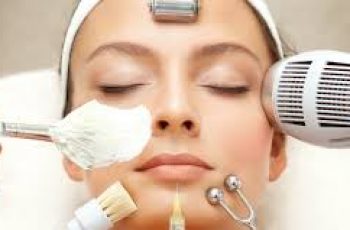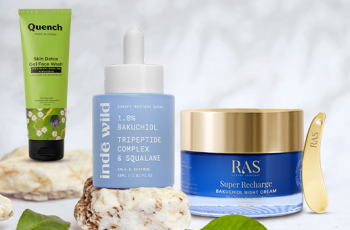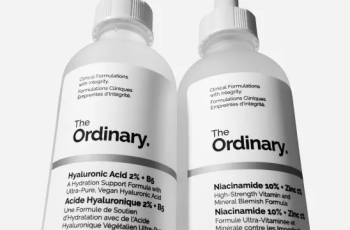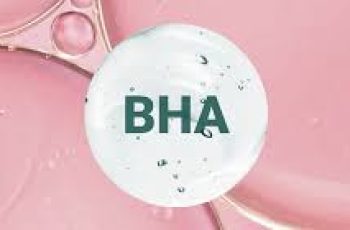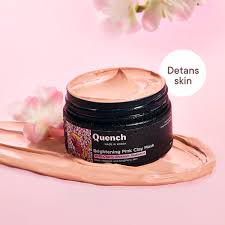
.webp)
.webp)
.webp)
Everything You Need to Know About Pink Clay in Skincare
.webp)
.webp)
Clay masks are often our first experience with skincare. For many, they’re a go-to solution for oily skin, breakouts, and dullness.
.webp)
.webp)
.webp)
From DIY routines to luxury spa treatments, clay has long held a top spot in skincare traditions. It remains one of the most trusted ingredients for skin detox.
.webp)
.webp)
Clay’s appeal spans centuries, with roots in ancient beauty rituals. Even long before modern dermatology, people were drawn to its natural purifying powers.
.webp)
.webp)
.webp)
Today, you’ll find clay in everything from affordable drugstore masks to high-end, dermatologist-developed treatments.
.webp)
.webp)
Its staying power comes from more than just tradition. The consistent results and user satisfaction help clay remain a skincare favorite.
.webp)
.webp)
.webp)
However, skincare trends have evolved. The current focus is less about stripping the skin and more about nourishing and protecting it.
.webp)
.webp)
The shift has moved away from aggressive purging and toward strengthening the skin barrier. It’s a big deal in how we approach skincare today.
.webp)
.webp)
.webp)
Gentle routines, hydration-rich formulas, and skin barrier support now take center stage. Think ceramides, hyaluronic acid, and milky cleansers.
.webp)
.webp)
The goal is to heal, not to over-exfoliate. That means less drying and fewer harsh treatments that leave skin irritated or tight.
.webp)
.webp)
.webp)
Still, clay hasn’t disappeared. It’s simply been reimagined. Now we see gentler, more balanced versions entering the spotlight.
.webp)
.webp)
One of these modern favorites is pink clay—a more delicate version of the traditional clay mask.
.webp)
.webp)
.webp)
Even beauty brands are embracing this softer approach. For example, Rose Inc. has launched its Skin Resolution Clarifying Toner with pink clay.
.webp)
.webp)
This isn’t your grandmother’s mud mask. It’s a modern detox with a hydrating twist, ideal for today’s skin needs.
.webp)
.webp)
.webp)
But what exactly is pink clay? And how does it compare to clays like kaolin or bentonite? Let’s dive into the details.
.webp)
.webp)
What Is Pink Clay?
.webp)
.webp)
.webp)
Pink clay is a soft, rosy-colored mineral-rich powder made by blending white and red clays. It combines the benefits of both for balanced, gentle care.
.webp)
.webp)
White clay (kaolin) is known for being light and gentle. It cleanses without stripping. Red clay has a richer mineral content, especially iron, and helps boost circulation.
.webp)
.webp)
.webp)
When mixed, these two create pink clay—a multitasking ingredient that purifies while remaining kind to your skin.
.webp)
.webp)
Jessica Kizovski, a product development manager at Rose Inc., explains that pink clay targets excess oil and clogged pores, but without over-drying the skin.
.webp)
.webp)
.webp)
She describes it as the “best of both worlds,” offering clarity and glow without irritation.
.webp)
.webp)
The color comes from iron oxide and the natural minerals in red clay. That’s not just for looks—it helps energize the skin.
.webp)
.webp)
.webp)
Even if you haven’t noticed it on an ingredient label before, you may have benefited from pink clay without realizing it. It’s used in many multi-clay blends.
.webp)
.webp)
Key Benefits of Pink Clay
.webp)
.webp)
.webp)
Let’s break down the major skin benefits of this multitasking clay.
.webp)
.webp)
1. Gentle Detoxification
.webp)
.webp)
.webp)
Pink clay draws out dirt, oil, and environmental pollutants from your pores. It does this without the harsh effects stronger clays might cause.
.webp)
.webp)
Unlike bentonite or green clay, which can dry or irritate sensitive skin, pink clay is soft, smooth, and non-stripping.
.webp)
.webp)
.webp)
2. Oil Control
.webp)
Like other clays, pink clay absorbs excess sebum. This makes it great for managing oily or combination skin without triggering dryness.
It helps refine the appearance of pores and leaves skin feeling fresh and balanced.
3. Brightening and Radiance Boost
Pink clay contains iron oxides and trace minerals that can help brighten dull skin. It improves skin tone and adds a soft, healthy glow.
It may also help improve texture over time by gently exfoliating dead skin cells.
4. Skin Soothing
The gentle nature of pink clay means it can calm redness and mild irritation. It may be useful for people dealing with reactive or inflamed skin.
It’s suitable for conditions like rosacea or hormonal sensitivity—though you should always patch test first.
5. Improves Circulation
The natural mineral content in red clay improves microcirculation in the skin. That’s part of why your face may look more refreshed after use.
Better circulation can lead to a more even skin tone and healthier-looking complexion.
Is Pink Clay Good for All Skin Types?
Yes, pink clay is considered safe and effective for all skin types, but it’s especially beneficial for dry, sensitive, or mature skin.
If stronger clays like bentonite or green clay leave your skin feeling tight, pink clay may be a better option. It gently purifies without disrupting the skin barrier.
People with oily or acne-prone skin can also benefit. It helps clear congestion and absorb oil without triggering rebound breakouts.
Its mildness makes it a good fit for those who experience sensitivity or irritation with traditional detox masks.
Best Ways to Use Pink Clay in Your Skincare Routine
Pink clay is versatile. You’ll find it in many skincare formulas—not just masks. Here’s where it shines:
1. Cleansers and Face Washes
Pink clay adds a gentle detox element to cleansers. It removes makeup and buildup while keeping the skin soft.
Cream-based cleansers with pink clay are ideal for morning and evening use without drying the skin.
2. Face Masks
This is where pink clay is most commonly used. Apply 1–2 times a week for a mild detox, especially when your skin feels dull or congested.
Look for hydrating ingredients in the mask formula, like glycerin or aloe vera, to balance the clay’s oil-absorbing effects.
3. Toners
New formulations, like Rose Inc.’s Skin Resolution Toner, use pink clay in a liquid form. These toners clarify the skin while adding hydration.
They’re great for everyday use, especially after cleansing and before serums or moisturizers.
4. Spot Treatments
Pink clay can be added to a paste or cream for targeted treatment of blemishes or oily zones. It helps calm and dry active pimples.
5. Scrubs and Exfoliants
In powder-to-foam exfoliants, pink clay can act as a soft buffer that polishes the skin without abrasive particles.
How to Add Pink Clay to Your Routine
Adding pink clay to your regimen is simple. Here are some quick tips:
Start with once a week to gauge your skin’s response
Follow with a moisturizer to lock in hydration
Avoid using right after strong exfoliants or retinol
Always patch test new products, especially if your skin is sensitive
Combine with calming ingredients like chamomile, calendula, or hyaluronic acid for a nourishing effect
Final Thoughts: Why Pink Clay Still Matters
In today’s skincare world, gentleness and barrier protection are top priorities. That’s exactly where pink clay shines.
It offers the benefits of traditional clay—like detoxifying and balancing oil—without causing excessive dryness or sensitivity.
With skin barrier awareness on the rise, ingredients like pink clay are finding their rightful place in balanced skincare routines.
You don’t have to sacrifice clarity for comfort. With pink clay, you get both—a glowing, refreshed complexion and skin that feels calm and cared for.
Whether you’re oily, dry, acne-prone, or sensitive, pink clay is a modern update to a classic ingredient that still holds its ground.
